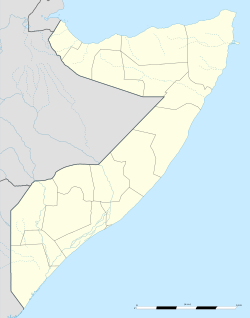Haranka | |
|---|---|
Town | |
Location within the Somalia | |
| Coordinates: 0°47′N43°23′E / 0.783°N 43.383°E | |
| Country | |
| Region | Middle Juba |
| Government | |
| • Control | |
| Time zone | UTC+3 (EAT) |
Haranka (Somali : Xaranka) is a small town in the southern Middle Juba (Jubbada Dhexe) region of Somalia. It is located very close to the Indian Oceaan and the Juba river.
